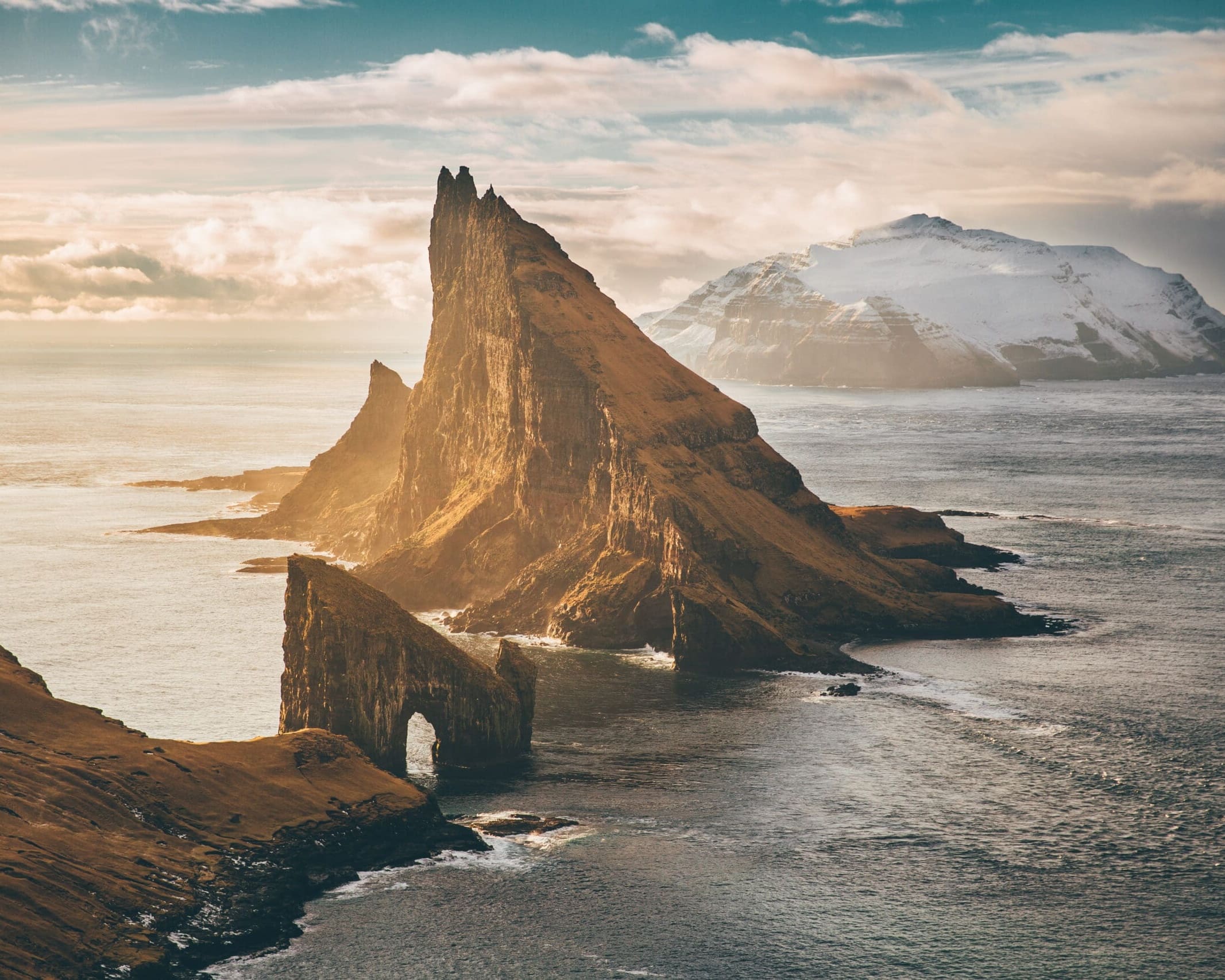Welcome to the Faroe Islands, an archipelago where every cliff, every wave, and every gust of wind tells a story. Nestled between Iceland and Norway in the heart of the North Atlantic, this cluster of 18 volcanic islands is a sanctuary for the soul, a place where the hustle of city life becomes a distant memory.
Here, the air is crisp, the grass is greener than you thought possible, and the sheep—well, they’re pretty much running the show. It’s a land that seems to have been sculpted by the gods themselves, with jagged peaks, cascading waterfalls, and villages that look like they’ve sprung from the pages of a fairy tale. But don’t let the serene landscapes fool you; this place has a wild heart, a vibrant culture, and a community that welcomes adventurers with open arms.

The Best Time To Visit
To experience the Faroe Islands at their prime, aim for the summer months of June to August. You’ll enjoy nearly endless daylight and mild temperatures, perfect for exploring and enjoying local festivals.
For those seeking fewer crowds and still striking landscapes, spring (April and May) and early autumn (September) are great, with vibrant seasonal changes. Winter (November to February) is for the daring, offering spectacular northern lights but challenging weather conditions.
Each season has its charm in the Faroe Islands, catering to different types of adventurers, but remember, the weather is famously unpredictable, so come prepared for anything!
What To Know
In the Faroe Islands, the primary language is Faroese. It’s a Nordic language, descended directly from Old Norse, the language of the Vikings.
Faroese is unique to the islands, embodying their rich cultural heritage and identity. But don’t let the language barrier scare you off; English is widely spoken, especially in tourist areas, so you’ll be able to chat, ask for directions, and learn about the local lore without much trouble.
In the Faroe Islands, the currency used is the Danish Krone. Even though the islands have their own flair and autonomy, they’re a self-governing archipelago under the Kingdom of Denmark, which explains the currency choice.
The Faroe Islands are considered one of the safest destinations worldwide. Crime rates are incredibly low, and the local community is known for being welcoming and helpful.
Public transport in the Faroe Islands is surprisingly efficient, given the rugged and dramatic terrain of this North Atlantic archipelago. The system encompasses buses and ferries, designed to connect the islands and make navigation relatively straightforward for locals and visitors alike.
Buses are a reliable way to get around the main islands, with routes covering key locations, including the capital, Tórshavn, and the airport. It’s a cost-effective option for travelers looking to explore the islands’ sights and communities.
Ferries play a crucial role in the transport system, bridging the gaps between islands that are not connected by roads. These ferry routes are not just practical; they offer some stunningly scenic journeys across the Faroese waters.
Renting a car might still be worth considering for the freedom to explore more remote areas at your own pace.
